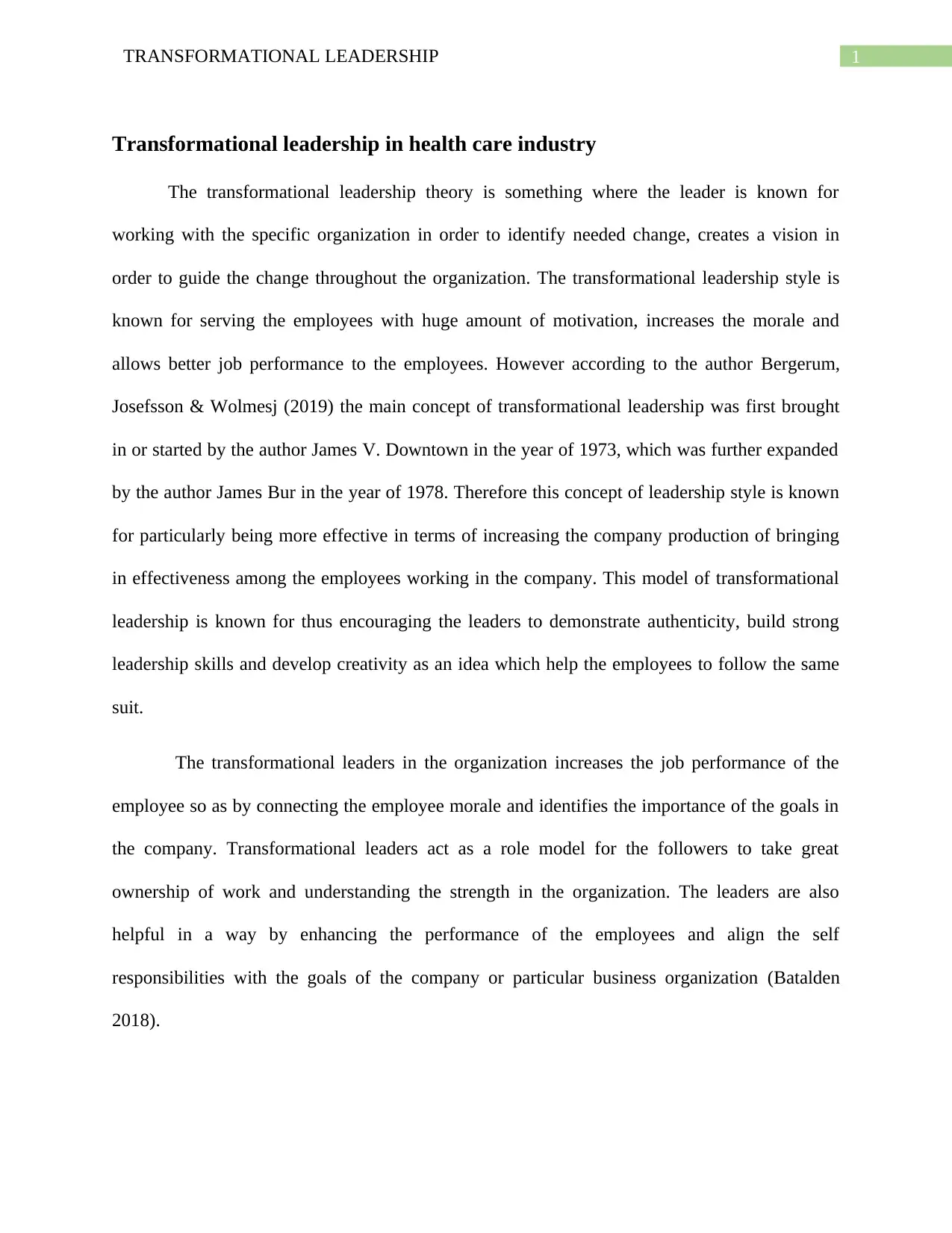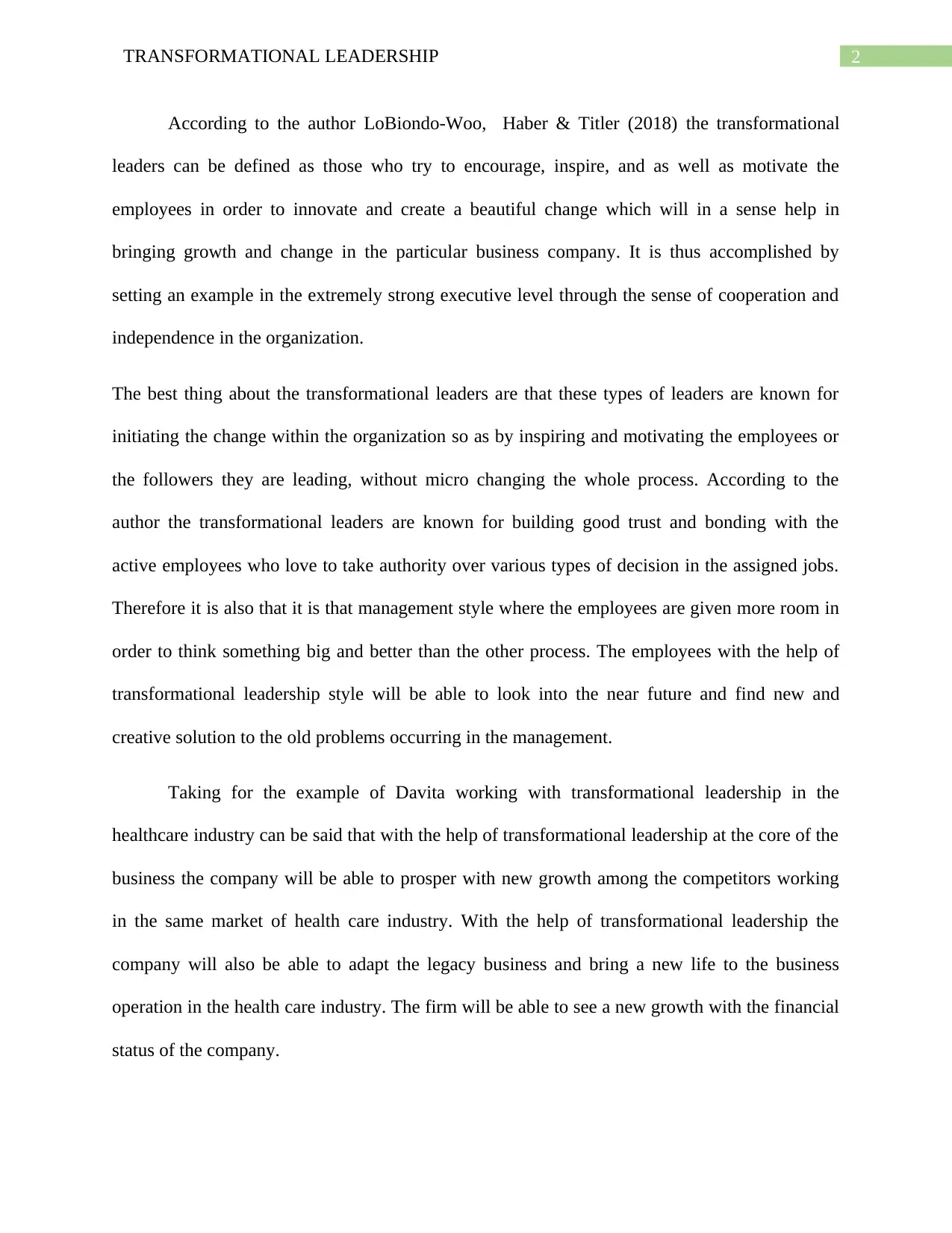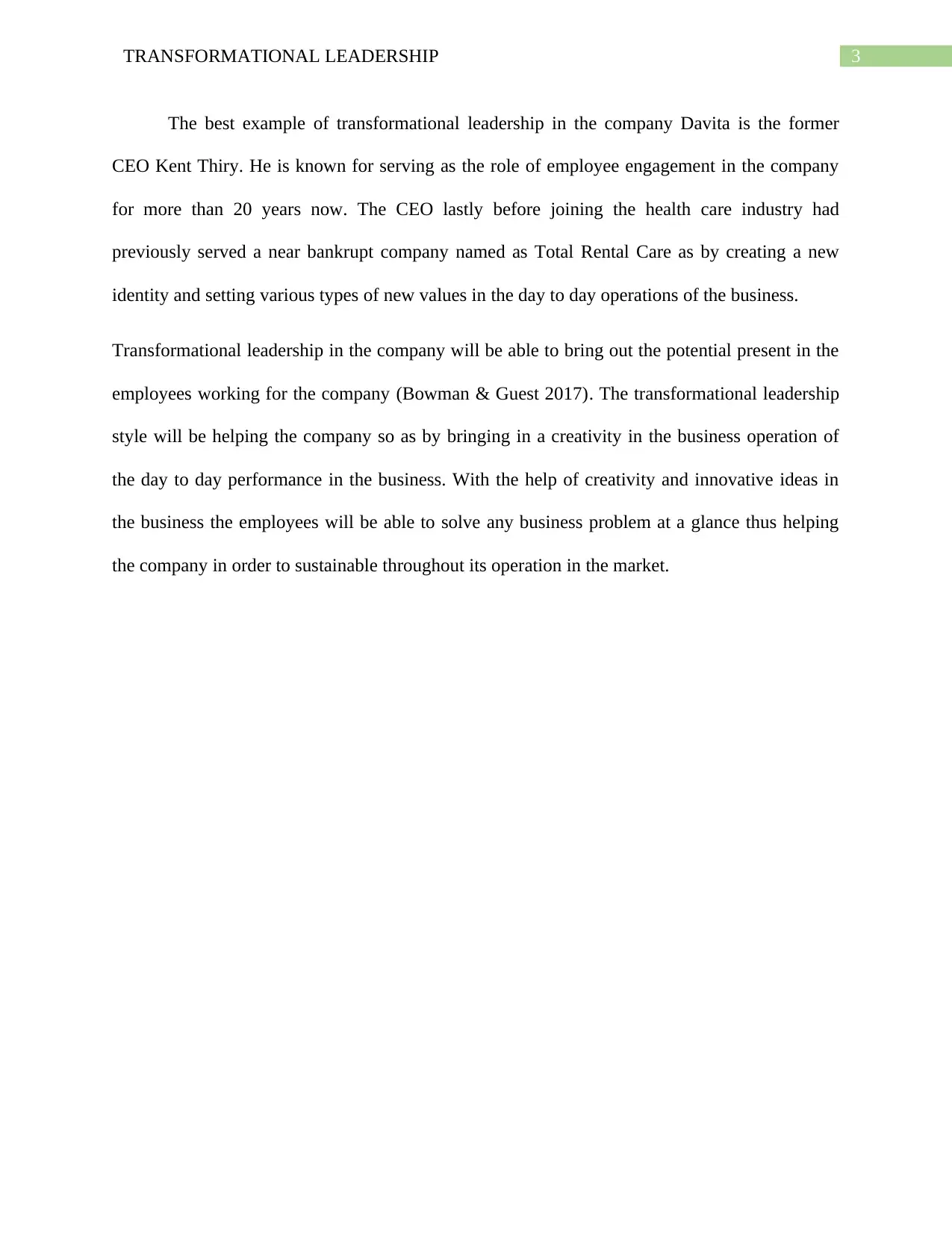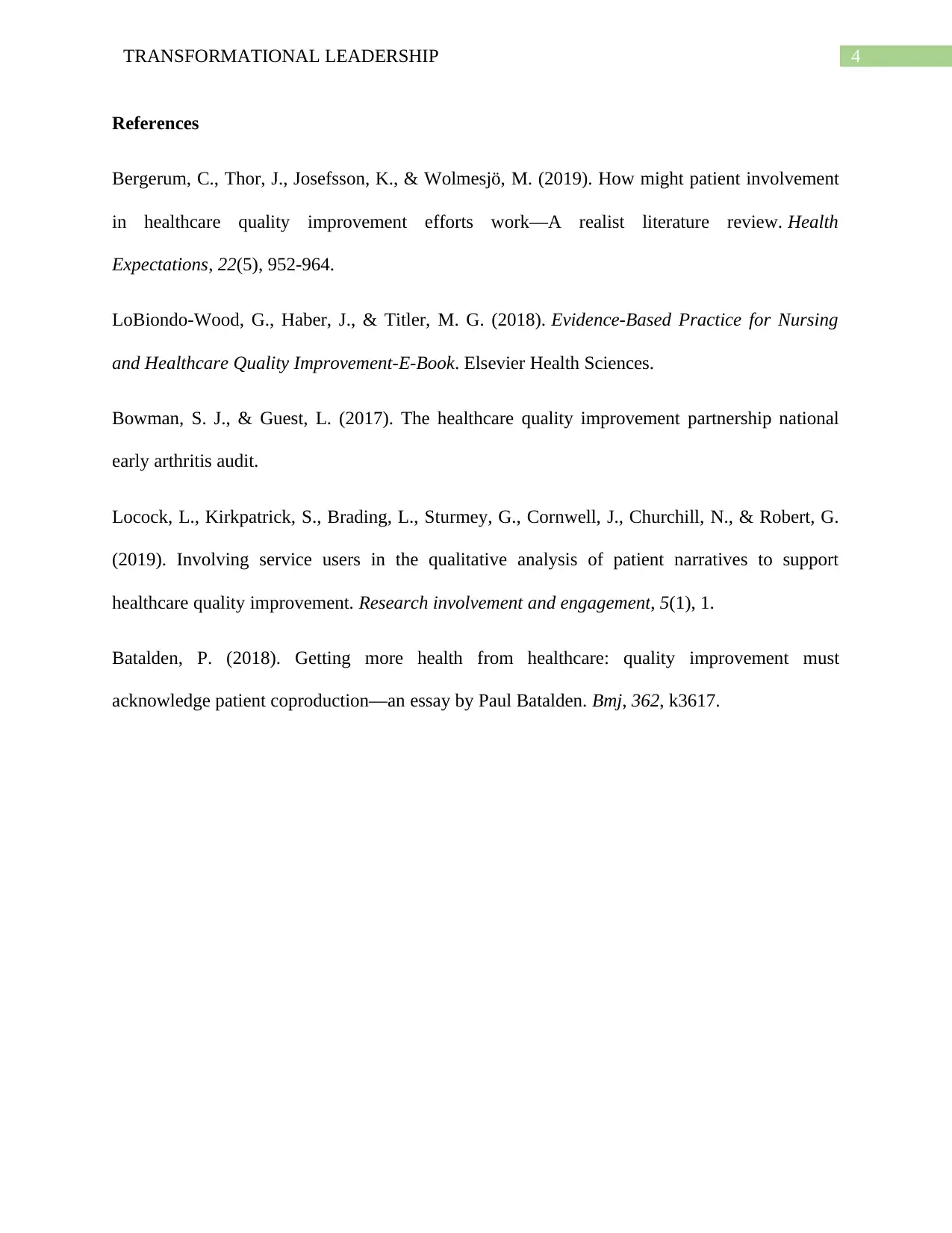Transformational Leadership: DaVita and Coastal Medical Center
VerifiedAdded on 2022/08/12
|5
|1000
|367
Report
AI Summary
This report delves into the concept of transformational leadership, examining its core principles and practical applications within the healthcare industry. It defines transformational leadership as a style that inspires and motivates employees to drive innovation and positive change. The report provides a real-world example of transformational leadership by analyzing the case of DaVita, highlighting how the company has leveraged this leadership style to achieve growth and adapt to the changing healthcare landscape. Furthermore, the report discusses the potential benefits of implementing transformational leadership in strategic planning, using Coastal Medical Center as a case study. The analysis explores how this leadership approach can help healthcare organizations enhance employee morale, improve performance, and align individual responsibilities with organizational goals, ultimately contributing to improved patient care and overall success. The report references several academic sources to support its arguments and provides a comprehensive overview of the topic.
1 out of 5












![[object Object]](/_next/static/media/star-bottom.7253800d.svg)